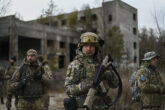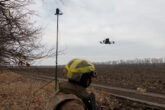February 27, 2018
We Must Shock-Test the USS Gerald R. Ford
Earlier this month the U.S. Navy submitted a request to Secretary of Defense Mattis to postpone the planned shock testing of the USS Gerald R. Ford, the new Ford-class super carrier, until the second carrier of its class, the USS John F. Kennedy, goes through its post-launch tests some six years from now. A shock test involves setting off a series of underwater explosive charges of sufficient size, detonating them closer and closer to the ship to shake the ship enough to determine weak points or other issues in the ship’s design. The test is done with a full crew onboard and is intended not to damage the ship but to judge its adaptability to combat conditions.
The Navy’s argument is that the Navy’s need to increase the number of deployable super carriers to eleven (we now have ten) in order to take strain off of the overall fleet exceeds its need to analyze the robustness and resilience of the Ford’s design. In other words, getting the Ford on deployment quickly is more important to the Navy than shock-testing it.
Read the full article in National Review.
More from CNAS
-
Defense / Transatlantic Security
When Defense Becomes Destruction: Austria-Hungary’s Mistake and Ukraine’s RiskThis article was originally posted on War on the Rocks. The southeastern Polish city of Przemyśl, with its elegant 19th century Habsburg-era train station, remains one of the ...
By Franz-Stefan Gady
-
Defense / Transatlantic Security
Ukraine’s Catch-22 MomentThis article was originally published in the Financial Times. In Joseph Heller’s wartime classic, Catch-22, the protagonist Yossarian seeks out the US army surgeon Doc Daneeka...
By Franz-Stefan Gady
-
CNAS Insights | Budgetary Own Goals Undermine “Speed and Volume”
On November 7, Secretary of Defense Pete Hegseth laid out a plan to overhaul the Department of Defense’s (DOD’s) acquisition system. Placing an emphasis on delivering new capa...
By Philip Sheers, Carlton Haelig & Stacie Pettyjohn
-
Drones: Who Is Making the New Weapons of War?
From Ukraine and Russia to Gaza and Sudan, drones have become a key weapon of war. Which companies are making them, and profiting from this rapidly expanding but controversial...
By Stacie Pettyjohn




